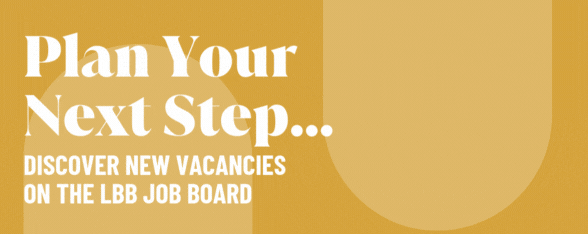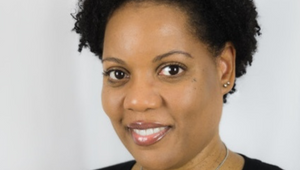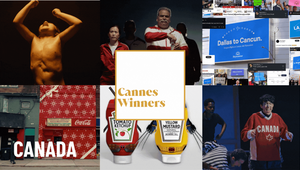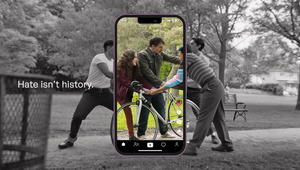
Planning for the Best: Intersecting Creative, Data and Technology with Kevin Flynn

Kevin Flynn brings almost three decades of highly integrated planning, strategy, analytics and business leadership experience to his role as CSO of Wunderman Thompson Canada. He uses this experience to lead and guide his team in the creation of inspiring brands toward human connections at the nexus of creative, data and technology, to deliver both results and awards for WT clients. Kevin is an ongoing contributor to the Canadian marketing industry, serving most recently as a Finalist Judge for Effies Canada.
LBB> What do you think is the difference between a strategist and a planner? Is there one?
Kevin> Technically speaking, yes, there is a difference. Using historical definitions, planners are ‘seekers’ of insights, truths and trends, and strategists are ‘guiders’ of message and placement. In today’s world, strategy is much broader and often includes planning functions within it, at least in most of the agencies I’ve worked at.
LBB> And which description do you think suits the way you work best?
Kevin> I consider myself a strategist first. My background extends across many different facets - ranging from business and client leadership roles to strategy leadership, and data and analytics to practise leadership. I tend to draw from all of that in a balanced way to examine a client’s problem in conjunction with identifying potential marketing solutions areas.
LBB> We’re used to hearing about the best creative advertising campaigns, but what’s your favourite historic campaign from a strategic perspective? Is there one that you feel demonstrates great strategy?
Kevin> For me, the best strategies tend to be where an enduring brand platform exists. Don’t get me wrong, there are so many brilliant campaign examples out there, but I’ve found it’s the platforms that are the perfect alchemy of strategic and creative thinking to be truly special. If strategy has done its job right, the thinking that shows up in the creative platform expression is built with future-proofing in mind to ensure that it won’t quickly lose its relevance. Great creative campaigns reach wear-out, but great creative platforms (inspired by strategy) don’t. Some examples would be, of course, the likes of ‘Just Do It’ (Nike) and ‘Priceless’ (Mastercard), but I also love ‘Vorsprung durch Technik’ (Audi) which is now over 50 years old and which actually started out as a campaign tagline, but had such teeth in it that it was later elevated (with strategy’s help) to become Audi’s enduring brand platform.
LBB> When you’re turning a business brief into something that can inform an inspiring creative campaign, do you find the most useful resource to draw on?
Kevin> A tool we’ve developed, called ‘Inspire’.
Inspiration is key to us at WT. In fact, our company mission is to inspire growth for ambitious brands. So, pretty much everything we create has inspiration at its centre. For many brands today, growth is hard to find. But brands that inspire their customers grow. This is not only our belief - we’ve proven it empirically. Today, we are the world's largest researcher on inspiration and have developed a diagnostic tool called ‘Inspire’, that allows us to understand just how inspiring a client’s brand is. As an index, we’ve shown that the highest scoring/most inspiring brands outperform the market (S&P). Within any individual brand score, we’re able to help clients understand the contributing elements to their ‘Inspire score’, and we use this to help them evolve their brand to be even more inspiring.
Within strategy, we utilise this on a regular basis with our clients as lightning rods for inspiration against our briefs. This sophisticated dashboard tool enables us to examine our client’s brand in the context of any other brand - be it a traditional competitor or an untraditional one - and across many geographies around the world. The data set behind this is huge… we’re talking over 33,000 brands across 183 categories, and almost half a million respondents. It’s quite powerful and unique in the marketplace.
LBB> What part of your job/the strategic process do you enjoy the most?
Kevin> I love detangling complex problems and challenges. It starts with ensuring that what the client has expressed as their problem or challenge is, in fact, the only or right problem to be chasing. Having sat in business leadership roles myself, I try to see their ask through their lens and against the very real demands they’re facing. But, I see my role as needing to also step away from how they see it to how an end consumer or customer sees it in the context of their brand and its positioning in the marketplace. It’s a blend.
I also love journey planning. This area has grown up so much in recent years, and I like to think that I have been part of it. At WT, we operate at the intersection of creative, data and technology. It’s what makes us so relevant in the marketplace today. Being able to access and draw from these areas of expertise enables us to contend with taking on the complexity of modern marketing. That mix of capabilities is often why clients choose us.
LBB> What strategic maxims, frameworks or principles do you find yourself going back to over and over again? Why are they so useful?
Kevin> I’ve grown up in this industry in a time where I was exposed to both the classic advertising maxims, frameworks, and principles, and have seen and been part of the development of a literal slew of increasingly sophisticated and data-driven frameworks. Working in an organisation such as WT, I have the privilege of being immersed in both on a regular basis. The reality is that there is great value in both, but they are, of course, very different. The key to all is that they are tools, not solutions - particularly with the data-fed frameworks. We’re not chucking data into a hopper and running with whatever falls out the other end. We use them to help identify problems and to illuminate pathways of opportunity, but they must be guided and driven by the strategist’s own skill, experience and intuition.
A few of my go-to's:
Brand Architectures - We have a brand architecture methodology called ‘Brand Code’ that is great at identifying the strategic underpinnings of a brand, whether it’s a new brand or a brand looking to evolve or extend. With these, it allows us to eek out all the important bits of what makes the brand what it is, from its purpose to its identity, and everything in between. This helps to guide the development of a creative brand platform, and every brand campaign experience and touchpoint.
The Brief - I can’t recall how many briefing templates I’ve collected over the years, but one thing the great ones have in common is that they are all, well, brief! Some people say a good brief is difficult to write. I disagree. If the desk research, pondering and considerations have been done and the strategist has worked their magic through some analysis - I personally love the ‘4C’s’ approach - then the brief should emerge in the writer’s head. So that’s the hard part… the period before the brief is written.
Journey Maps - Today, the journey map is central to pretty much everything we do. At its root, we create them with an audience in mind and their specific (and changing) needs at each part of the buying or ownership stages. We dig deep to understand what that need truly is, what they are thinking, feeling and doing at that moment, and only then consider how and where the brand needs to show up to address that need. To us, journey planning is audience driven, not brand driven and channel agnostic.
LBB> What sort of creatives do you like to work with? As a strategist, what do you want them to do with the information you give them?
Kevin> Ultimately, our jobs are not dissimilar - what good strategy and creative people share is a deep sense of curiosity and commitment to breakthrough thinking. We’re both strategically and creatively-minded, and we’re both on a quest for well-executed, brilliant ideas that inspire and motivate a consumer to action. I like to work with creatives who value and respect the role and contributions of strategy to the process of developing great work. It’s a partnership. When they get it, you know it, because they come back to you during or post-brief with more questions about what you said or provided; they refer to key words or themes presented to them in the brief as jumping off points for ideas. Sometimes, it happens that the words or strategy concepts we craft make their way through as creative expression; ultimately they trust that the information provided to them was well conceived.
LBB> There’s a negative stereotype about strategy being used to validate creative ideas, rather than as a resource to inform them and make sure they’re effective. How do you make sure the agency gets this the right way round?
Kevin> I’ve certainly worked in these environments over the years, but I wouldn’t say it’s universally true. At my agency in particular, our model embraces distinct but partnered roles for strategy and creative. We’ve all come from places where the balance wasn’t quite right, and as a team, but also across the network, we’re emphatically driving this balance. To me, it starts attitudinally. If ego and inflexibility is at the table from either side, good luck trying to get it right. I think as the shifts are occurring away from just big idea campaigns to brand ecosystems of a thousand complex parts, there has been an equal shift for creative partners to lean more on others - strategy for sure - but also technology and CX partners. Here at WT, we’re one part technology company, and regularly build or contribute to the very platforms that carry our work.
LBB> What have you found to be the most important consideration in recruiting and nurturing strategic talent? And how has covid-19 changed the way you think about this?
Kevin> I’ll address both separately:
Recruiting - First off, it’s great to see the diversity of talent coming into our industry, in every respect. To me, the most important consideration - beyond relevant work experience - is genuine curiosity; not just saying it but demonstrating it. We often find candidates who are out there blogging, or inventing, or contributing in meaningful ways to public discourse.
Nurturing - At WT, career management is something we take pretty seriously, and it’s literally driven by the employee. As a manager, I work with my team to understand their goals and aspirations, not my or the organisation’s goals for them. Like many agencies, we take a 360 approach to gather feedback from colleagues, we combine it with their own self reflections, and then we use this in conjunction with the development of career pathing. It’s a simple approach and the right one, and it allows me to be on the look-out for projects or new challenges that I know my team members would be right for.
Covid-19 - To be honest, we took on the challenges of covid-19 head-on, and the leap to using more technology every day was pretty easy for us since we’re partly a technology company ourselves. I don’t micro-manage. I care about the end product, and the quality of the thinking that has gone into it. That was true before covid-19 as well. With less face time and in-office presence, of course it’s harder to capture the energy of a brainstorm or spontaneous discourse. But, I rely on my team to stay connected with each other, and to work informally with each other as much as following the formal flows. I try to foster a sense of team pride for our product, and to enable a dependency on each other for support and help. I believe in the power of collaboration.
Also, where possible (and should the financials allow), I try to pair two strategists on a large project. One may be the overall lead, or they may ultimately divide and conquer aspects of the project, but two minds are almost always more effective, and this helps overcome distance when people can’t be in the office as much.
LBB> In recent years it seems like effectiveness awards have grown in prestige and agencies have paid more attention to them. How do you think this has impacted on how strategists work and the way they are perceived?
Kevin> Personally, I love this. I’ve always worked in settings and disciplines where true measurement and effectiveness was a requirement against the work we came up with, so I am no stranger to the effectiveness awards circuits! As digital has accelerated and is now almost dominating, so too has our ability to more accurately measure - even in traditional channels. And all of that drives increased accountability to our work. This forces thinking to be sharper with greater amounts of objectivity injected into it.
I’ve long been a fan of closed-loop marketing, whereby we use measurement to directly drive next campaign thinking. Of course, it’s the basis for media optimisation, but it can (and should) apply elsewhere as well. It’s also one of the reasons I pursued roles in data and analytics… to me good strategy ends in good analytics. This allows the strategist to go back in and see what worked and what didn’t, against their initial thinking. Without it, the strategist is left unaccountable and doesn’t learn from what actually happened.
In terms of how they will be perceived? Smarter. To me, strategists need to wallow in numbers sometimes. Our role is not to be the data guru, but we should be comfortable rolling around in data and learning how to interpret it. This is often where insights lie. In the years to come, I suspect analytics will become an increasing remit for strategists… to learn from and inform the future technologies that will exist.
LBB> Do you have any frustrations with planning/strategy as a discipline?
Kevin> Not really. I love it! I know some of the strategy community feels like our thinking is not recognised or celebrated enough against the final product (usually a creative or technology solution in our case), but I personally don’t see it that way. It’s a team sport, and always has been.
LBB> What advice would you give to anyone considering a career as a strategist/planner?
Kevin> Know why you want to do it. That starts with understanding what it is. Get informed. Speak to other strategists, read, and absorb all you can from the discipline experts and gurus. And pick a lane. Strategy is no longer just one thing. You can literally make a strategy career in every facet of marketing communication services - from creative and comms strategists to media strategists to public relations strategists, and so on. Find out where your greatest passion is, but also where your greatest skills are, and pursue that.















